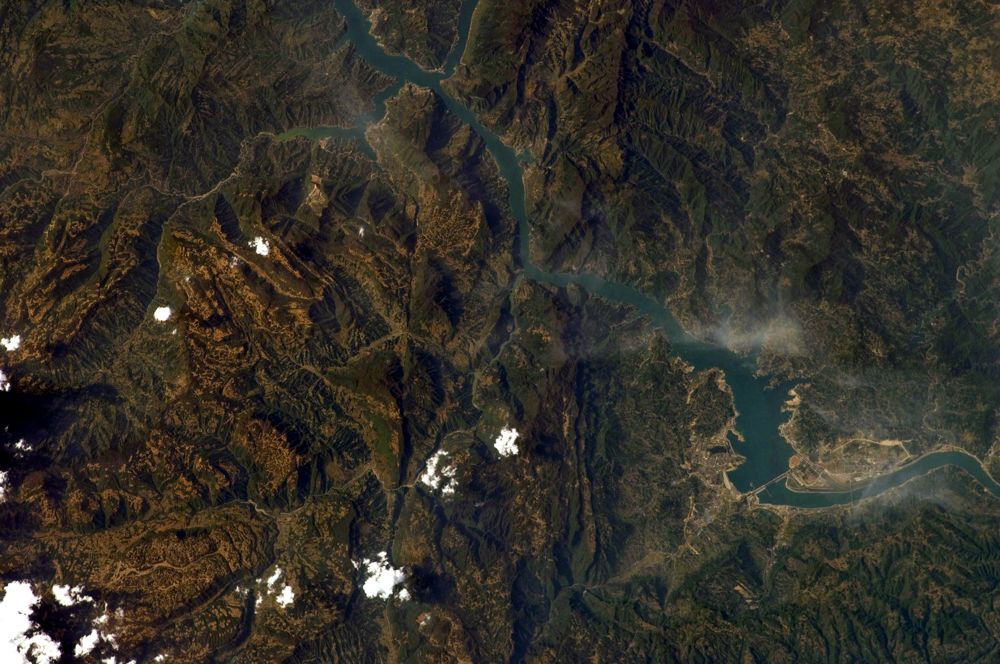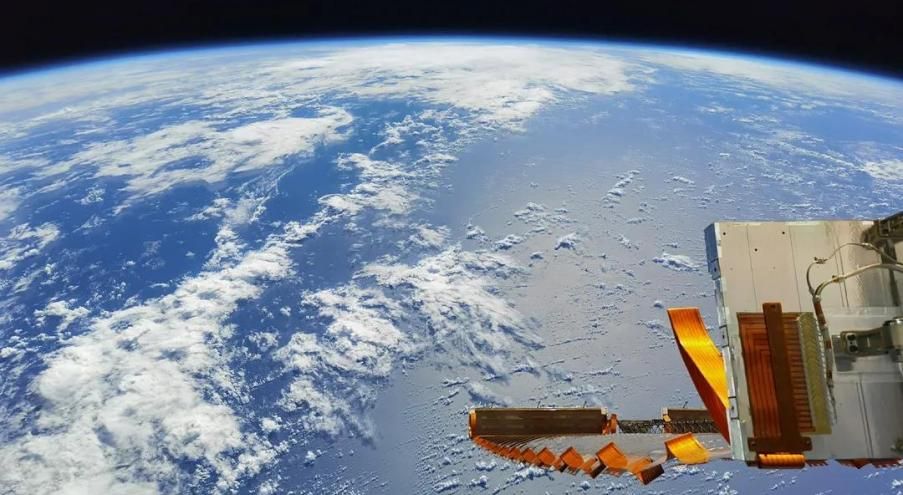The Three Gorges Dam: A Gigantic Brake for the Planet – How China's Largest Hydroelectric Power Station Has Slowed the Earth's Rotation
Can a man-made structure influence the motion of an entire planet? It sounds like the plot of a science fiction movie, yet this is a reality. The largest hydroelectric power station in China – the legendary Three Gorges Dam – has been shown to have the ability to slow the Earth's rotation. According to data from NASA, the colossal mass of water held by this megastructure has already increased the length of a day (albeit by mere fractions of a microsecond) and is shifting the planet's axis. These facts raise an important question: what cost is the Earth paying for massive investments in energy and humanity's engineering ambitions? The alarming undertones are not without reason – this represents an instance of how the impact of infrastructure projects on the planet can extend beyond localized effects, affecting fundamental parameters of the Earth.
The Giant Dam and Its Impact on Earth's Rotation
The Three Gorges Dam on the Yangtze River is the world's most powerful hydroelectric station and a point of pride for China. Its construction spanned from 1994 to 2012, requiring colossal resources and investments in energy, displacing approximately 1.3 million people, and resulting in the flooding of extensive territories. The final dimensions are monumental: the dam measures 2.3 km in length and 185 m in height. Behind this concrete-steel wall lies a vast reservoir capable of holding around 40 km³ of water (approximately 39 billion tons). To put this into perspective: this is enough to provide generator capacity of 22,500 MW (equivalent to about 15 nuclear reactors) and control the devastating floods of the Yangtze for the benefit of millions of residents. At first glance, this seems like only benefits – control over the elements and clean energy. However, nature does not recognize local boundaries, and unexpected global effects began to manifest in the initial years of the Three Gorges' operation.
The American space agency NASA conducted calculations and reported with concern an unusual phenomenon: the filling of this gigantic reservoir has indeed slightly slowed the Earth’s rotation. The redistribution of such a mass of water has altered the inertial characteristics of the planet. Here are some key scientific facts documented by researchers:
-
Lengthening of Days: Every day on Earth has become 0.06 microseconds longer than before the dam's construction. In other words, the planet's rotation has slowed by one hundred millionth of a second.
-
Shift of the Rotation Axis: The Earth's axis has shifted approximately 2-2.5 centimeters from its previous position. This is a minuscule shift, undetectable in everyday terms, yet it is a fact measured through calculations.
-
Change in Planet Shape: According to estimates, the Earth has become slightly more flattened at the poles and bulging at the equator, although the change is catastrophically minimal (a fraction of a billion).
At first glance, these numbers appear minuscule. An additional 0.00000006 seconds in a day is merely ~0.06 microseconds; it would take millions of years to accumulate a single second of "extra" time. However, the very fact that a man-made dam has influenced the rotation of our planet is unprecedented. Previously, such effects were observed only from the most powerful earthquakes or the movement of ice and ocean masses. The Three Gorges Dam has become the first engineering structure capable of noticeably (albeit minimally) altering the rotation parameters of the Earth. This serves as a troubling signal: we have entered an era where human infrastructure impacts the geophysics of the entire planet.
 Satellite image of the Three Gorges Dam area in China. The enormous reservoir (the winding blue ribbon) stretches for hundreds of kilometers behind the dam, accumulating tens of billions of tons of water. This redistribution of mass on the Earth’s surface has affected its rotation and axis position.
Satellite image of the Three Gorges Dam area in China. The enormous reservoir (the winding blue ribbon) stretches for hundreds of kilometers behind the dam, accumulating tens of billions of tons of water. This redistribution of mass on the Earth’s surface has affected its rotation and axis position.
Scientific Explanation: Why Water Slows the Planet
Why does the gigantic Three Gorges Dam influence the rotation of the Earth? The answer lies in the laws of physics – specifically in the conservation of angular momentum. The Earth spins like a top, and the speed of its rotation depends on the distribution of mass relative to its axis. If mass moves away from the axis – the rotation slows down (similar to a figure skater spreading their arms to slow down), if it moves closer – it speeds up. In the case of the Chinese megadam, a massive volume of water was raised to 175 meters above sea level and concentrated away from the equator. The planet, as if feeling "outstretched arms," began to rotate at a slightly slower speed.
NASA scientists explain this phenomenon by stating that the movement of mass on the Earth's surface has increased its moment of inertia, which automatically slowed the angular velocity of rotation while conserving the overall angular momentum. Dr. Benjamin Chao, a geophysicist at NASA, metaphorically compared the dam's effect to that of a spinning figure skater. He emphasized that any movement of mass on Earth – from seasonal weather system changes to the movement of a car – affects the speed of the planet's rotation. Usually, these influences are minuscule and imperceptible. However, the scale of the Three Gorges project is unique: by raising tens of billions of tons of water upward, humanity has conspicuously demonstrated its impact on the Earth's rotation.
It is essential to understand that this does not imply a change in the total angular momentum of the Earth (which is conserved), but merely a redistribution of mass and, consequently, a change in rotation speed and axis position for compensation. The dam's effect was theoretically predicted in advance. As far back as 2002, geophysicists estimated that filling the triangular reservoir would result in an increase in the length of days by approximately 0.060 microseconds and a pole shift of about 0.8 angular milliseconds (which correlates to those same ~2 centimeters). Essentially, the Earth has "bulged" at the equator just a tad and began to spin slightly slower.
It is worth noting that such microscopic changes cannot be felt without specialized instruments. For everyday life, 0.06 microseconds is negligible. However, astronomical observatories and satellite navigation systems are precise enough to account for even such nuances. Moreover, scientists need to adjust the reference time (UTC) with additional seconds every few years, as the Earth's rotation is gradually slowing down naturally. Now, this slowdown has been contributed to by the Chinese hydropower station.
Geophysical Consequences and Long-Term Risks
What geophysical consequences could arise from such a tiny yet symbolic slow down? A shift of the Earth’s axis by a couple of centimeters does not directly trigger catastrophes – the Earth's axis continually wobbles due to the complex movement of the liquid mantle, atmosphere, and the Moon's influence. Nevertheless, the fact remains that the largest dam built by humanity has made its contribution to these fluctuations. Combined with other factors, this could matter. Scientists note that mass redistribution on the planet due to human activity has long been impacting the Earth's rotation axis. For instance, the depletion of groundwater and melting ice due to global climate change have led to pole shifts of several tens of centimeters over recent decades. From 1993 to 2010, the axis drifted at a speed of approximately 4.3 cm per year due to the transfer of water from land to the oceans. Against this background, the contribution of the Three Gorges Dam (~2 cm at once) may seem modest but is indicative: even an artificial reservoir can shift the Earth's axis.
The long-term risks of such interference in natural balances may appear abstract. Today's increase in the day length by 0.00000006 seconds has no bearing on our daily schedules. However, for geophysics and climate specialists, it is essential to monitor these accumulated effects. If humanity continues to construct larger and more grandeur hydroengineering projects, the cumulative impact on the Earth's rotation could theoretically increase. In Chao's model from 1995, it was noted that the cumulative filling of large reservoirs worldwide could measurably alter the planet's moments of inertia. Moreover, there are indirect repercussions: alterations in rotation and axis position affect centrifugal force distribution, ocean dynamics, and even climate models over centuries. For example, it is known that a slowdown in the Earth's rotation over geological time has been associated with changes in the atmosphere and day length, which has affected biological rhythms. While 0.06 microseconds is too little to trigger such effects, the very fact of interference serves as a warning about potential future scenarios.
It is also important to mention the psychological aspect: the "Three Gorges Effect" compels us to rethink our approach to megaprojects. In the past, when planning massive dams or other infrastructure projects, engineers primarily considered environmental, economic, and social impacts in the construction region. Now, with this new awareness, global physical parameters of the Earth must also be factored into the agenda. While the current impact may be microscopic, it is tangible and measurable. This case serves as a scientific precedent and a cause for contemplation.
Conclusion (call to action): The story of the Three Gorges Dam is a warning signal and simultaneously a valuable lesson. Humanity has intrusively invaded the natural processes of the planet, and the geophysical consequences were imminent. Even if this influence is currently negligible, it clearly illustrates that our technological progress has the potential to impact planetary scales. When making decisions regarding the next grand project, whether it be a new hydropower station, metropolis, or any other massive construction, we must be mindful of the shifting axis of the planet and other hidden effects. It is crucial to realize that the Earth is a unified system, and large-scale human interventions resonate in the very depths of this system's physics. The Three Gorges Dam has already added 0.06 microseconds to our days – a seemingly small change, but telling. In the long term, neglecting such changes carries unknown risks. We urge a measured and cautious approach to engineering advancements. As we observe the blue sphere from space, it is vital to remember that the influence of infrastructure projects on the planet is a reality, and our understanding of these consequences will determine the future of sustainable development. It is time to acknowledge: every bridge, dam, or skyscraper is not merely a step forward for civilization but also a challenge to the natural balances of the Earth. A careful attitude and scientific consideration of such projects can help avoid unpleasant surprises and keep the rotation of our shared home securely managed by nature and wisdom.
 View of Earth from space. Even the slightest changes in the rotation and position of the planet are recorded by researchers. Large-scale projects like the Chinese Three Gorges Dam serve as a reminder of humanity's ability to affect the parameters of this fragile system.
View of Earth from space. Even the slightest changes in the rotation and position of the planet are recorded by researchers. Large-scale projects like the Chinese Three Gorges Dam serve as a reminder of humanity's ability to affect the parameters of this fragile system.



